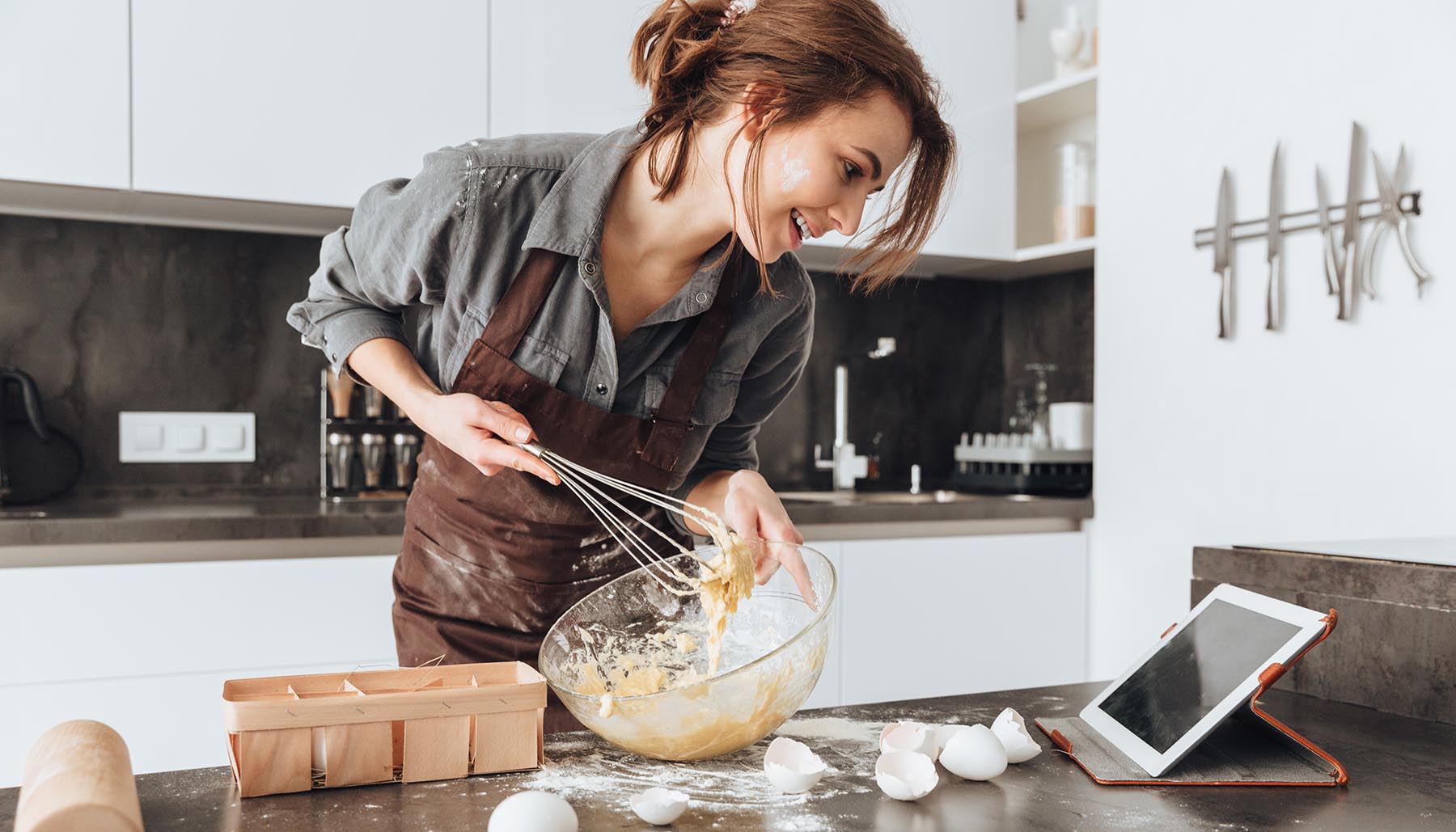Cooking is one of the most valuable life skills you can master. It’ll help you save money and eat healthier, impress your family and friends, and maybe even give you a greater sense of connection to your food. You are what you eat, right?
If you’ve mastered a few basics but don’t know where to go from here, we’ve got you. Here are the tips, tools, and techniques to take your home cooking to the next level.
Buy One Good Knife
You know those pricey knife sets that come with their own block? Skip them in favor of a good chef’s knife. This is your workhorse knife that you’ll use more than any other. You’ll use it to cut, chop, dice, slice, and mince.
Never throw your knife in the dishwasher, as that can make the blade dull. Clean and dry your knife every time you use it. Get it professionally sharpened once or twice a year to ensure a smooth, controlled cut every time.
Don’t Fear the Roux
A lot of recipes, such as mac and cheese, are built on a roux. It’s the secret to creamy, cheesy sauces and velvety stews and soups. Yet a lot of home cooks are terrified of this kitchen technique. I get it. In fact, I had never made a roux until last month! Turns out it’s not that hard.
A roux is just equal parts of flour and butter that get cooked on the stove. In a saucepan, melt two tablespoons of butter over medium heat. Add two tablespoons of flour. Then stir-stir-stir until the roux is the color specified in your recipe. A white roux cooks for about two minutes. A blonde roux goes for up to ten minutes, and a brown roux–common in Cajun cooking–can go up to twenty minutes.
Try Flaky Salt
There’s a reason so many chefs are obsessed with this stuff. Flaky sea salt is still regular ol’ sodium chloride–but with a twist. The way that it is evaporated causes the salt to form big, flaky crystals. Think of it as salt confetti.
A little pinch of this stuff on top of your food makes a world of difference in the flavor. Instead of a uniform saltiness, your palate gets goosed by bursts of flavor with every bite. Pro tip: Next time you bake chocolate chip cookies, hit them with a little flaky salt right before they go in the oven.
Grate Your Own
Did you know that most of the pre-shredded cheese you buy at the grocery is coated in what’s essentially sawdust? Cellulose is another word for wood fiber, and it’s used to prevent shredded cheese from sticking together in clumps. It won’t hurt you, but it does make the cheese melt less smoothly.
Block cheese is a better choice in pretty much every way except convenience. It melts better and costs less. Uses less packaging, too. And it’s not that hard to grate a serving or two of cheese by hand. If you need an entire block, however, go for a food processor.
Be Present in the Kitchen
Every time I’ve had a kitchen disaster, it’s been because I was rushing or distracted. Even recipes I’ve made a dozen times can go horribly wrong if I’m not paying attention. Just ask the shortbread that ended up in the trash because I added an entire extra stick of butter! My mind was somewhere else, and I completely blanked on how much butter was supposed to go into the mixing bowl.
Kitchens require attention. Loud music, involved conversations, and other distractions can break your focus at a crucial moment. If that happens while you are wielding your very sharp chef’s knife… well, it’s not great.
Take your time while you work. Plan for more time than you think you need so that you aren’t rushing to put food on the table. One trick is to prep a simple appetizer beforehand. If my guests start getting antsy, I can shove a plate of crudités and hummus at them. Problem solved!













